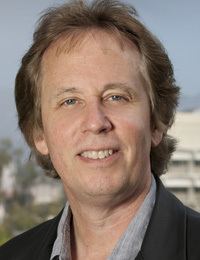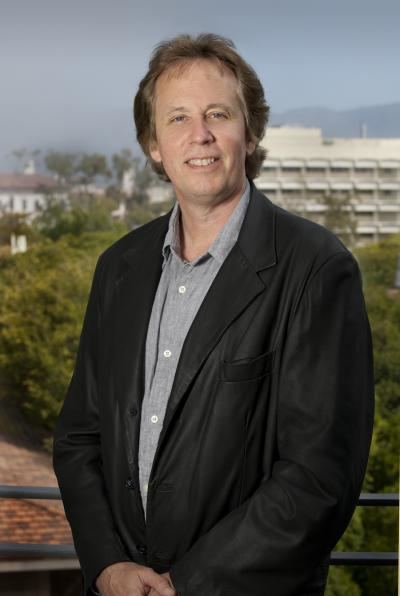Name Jamey Marth | ||
 | ||
Institutions Sanford-Burnham Med. Res. Inst.UCSBHoward Hughes Medical InstituteUCSD Institution Sanford Burnham Prebys Medical Discovery Institute | ||
Tedxamericanriviera dr jamey marth nature nurture and nanomedicine
Jamey Marth, Ph.D., is a molecular and cellular biologist. He is currently on the faculty of the University of California, Santa Barbara (UCSB) and the SBP Medical Discovery Institute of La Jolla, California and Lake Nona, Orlando. At UCSB, Dr. Marth is the Director of the Center for Nanomedicine and a Professor in the Department of Molecular, Cellular and Developmental Biology. He is also the inaugural recipient of the John Carbon Endowed Chair of Biochemistry and Molecular Biology and the recipient of the Duncan and Suzanne Mellichamp Endowed Chair of Systems Biology.
Contents
- Tedxamericanriviera dr jamey marth nature nurture and nanomedicine
- 689254938001 730305349001 jamey marth
- Education
- Career
- Research
- Selected publications
- References

His research has largely focused on molecular cell biology and, in particular, how protein glycosylation contributes to the mechanisms of health and common diseases including diabetes, sepsis, inflammatory diseases, and autoimmunity. His research has demonstrated metabolic causes of common diseases that do not originate from genetic mutation and variation, and is credited with the conception and co-development of Cre-Lox recombination as a form of conditional mutagenesis in living mammals.

689254938001 730305349001 jamey marth
Education
Marth earned a Ph.D. in Pharmacology from the University of Washington in 1987. During his time at Washington as a graduate student, he was mentored by Roger M. Perlmutter and Edwin G. Krebs. Marth was Perlmutter's first graduate student. Marth's first faculty position after earning his doctorate was at the University of British Columbia's Biomedical Research Centre in Vancouver, British Columbia, Canada.
Career
While in Vancouver, Marth conceived and co-developed Cre-Lox recombination for conditional mutagenesis. This technology has enabled the study of gene function in specific cell types and at specific times among living animals. In 1995, George Palade and Marilyn Farquhar (among others) recruited Marth to the University of California, San Diego (UCSD) in the Department of Cellular and Molecular Medicine. Upon his arrival, he was appointed as an Investigator of the Howard Hughes Medical Institute. Marth spent more than 14 years in this position at UCSD. His research at HHMI and UCSD helped bolster an already renowned glycobiology program that originated with Ajit Varki and later included Jeffrey Esko.
In 2009, he accepted a position at the University of California, Santa Barbara and the Sanford-Burnham Medical Research Institute as the Director of the Center for Nanomedicine. He also became the inaugural recipient of the John Carbon Endowed Chair in Biochemistry and Molecular Biology and the recipient of the Duncan and Suzanne Mellichamp Endowed Chair of Systems Biology.
Research
Marth’s research has included the development of new methodologies and conceptual advances in the understanding of disease. His conception and co-development of Cre-Lox conditional mutagenesis continues to provide major discoveries of the mechanistic underpinnings of health and disease among hundreds of researchers and their laboratories. Prior to the development of conditional mutagenesis, the use of homologous recombination was limited to systemic gene targeting and mutation. Marth's use of Cre-Lox conditional mutagenesis established the presence and functions of multiple and in some cases previously unknown enzymes participating in protein glycosylation, an area of research that has become a focus of exploration in how common diseases originate in the absence of discernible pathogenic genetic variation. Marth has further used Cre-Lox conditional mutagenesis to establish a reproducible method for obtaining animal models of essential X chromosome-linked genes. These studies further explained how glycan linkages function in the origins of disease at the metabolic and cellular levels.
Marth's early studies of glycosylation and glycan linkages revealed a profound effect on immunity and contributed substantially to the genesis of the related field of glycoimmunology. Marth's lab further discovered relationships between aberrant glycan linkages and autoimmune diseases including the fact that alterations of glycan linkages could initiate chronic inflammation in the development of autoimmunity. Marth's research has shown that the occurrence of autoimmune conditions (such as lupus) in mammals can be caused by the presence of abnormal glycan structures within the body.
Marth's laboratory has also taken a close look at the molecular and cellular bases of type 2 diabetes and the role that protein glycosylation has in the origin of the disease. Their research showed that the malfunction of pancreatic beta cells was the major contributor to disease onset. Their research indicated that genetic variation was unlikely to be the cause of obesity-associated type 2 diabetes in humans. Instead, their models suggested that metabolic alterations of pancreatic beta cells due to an elevation of fatty acids in obesity disabled glucose sensing, resulting in hyperglycemia with glucose intolerance. Marth’s laboratory further found that this pathway was induced in human patients with type 2 diabetes and was responsible for a significant amount of insulin resistance present in obesity-associated diabetes.
The pathological features of sepsis have also been the subject of research by Marth's laboratory. Marth and colleagues discovered the first physiological purpose of the Ashwell-Morell Receptor (AMR), a hepatocyte lectin discovered by Gilbert Ashwell and Anatol Morell. Their studies revealed both a biological purpose of the receptor and how to use it for therapeutic purposes in pneumococcal sepsis.
In 2008, Dr. Marth published an enumeration of the building blocks of life, all of which fall under the 4 types of macromolecules present in all cells (glycans, lipids, nucleic acids, and proteins). This concept is becoming a feature of modern cell biology texts. Marth and other colleagues have called attention to the fact that only half of these macromolecules are encoded in the genome, thus indicating that a more holistic and rigorous approach is needed to understanding cell biology and the origins of disease.
In his position as the Director of the Center of Nanomedicine, Marth and his team are exploring the application of new delivery methods to directly visualize and treat disease in collaboration with Center for Nanomedicine Co-Founder, Dr. Erkki Ruoslahti.
